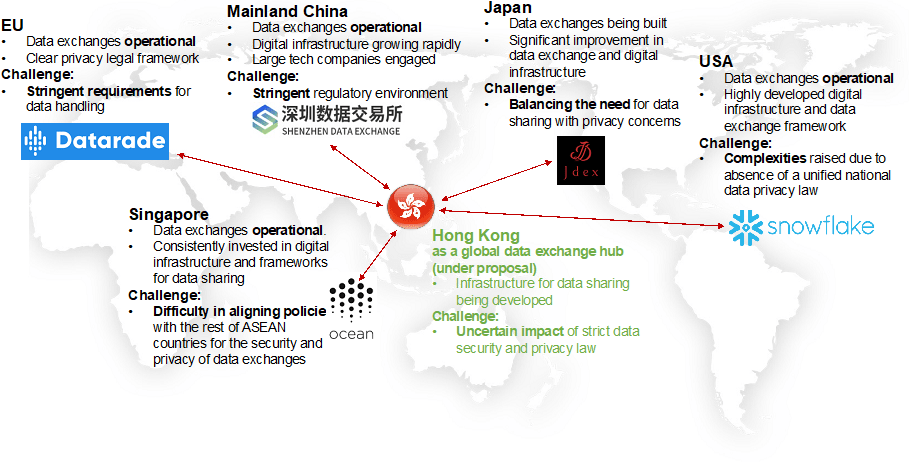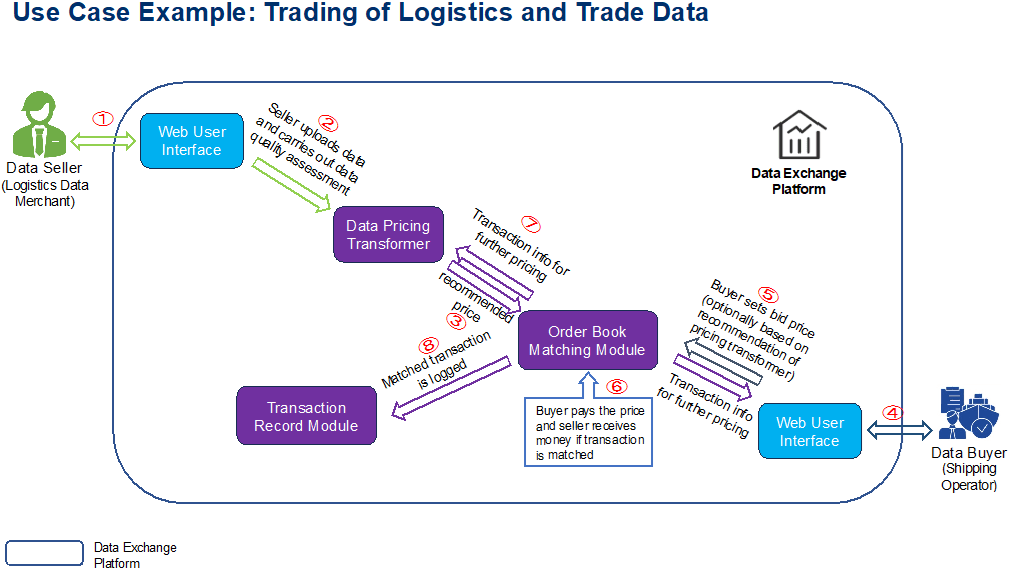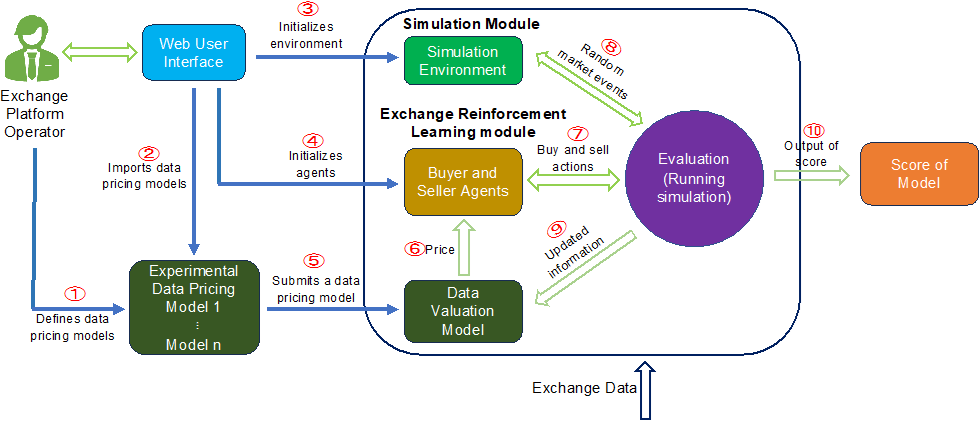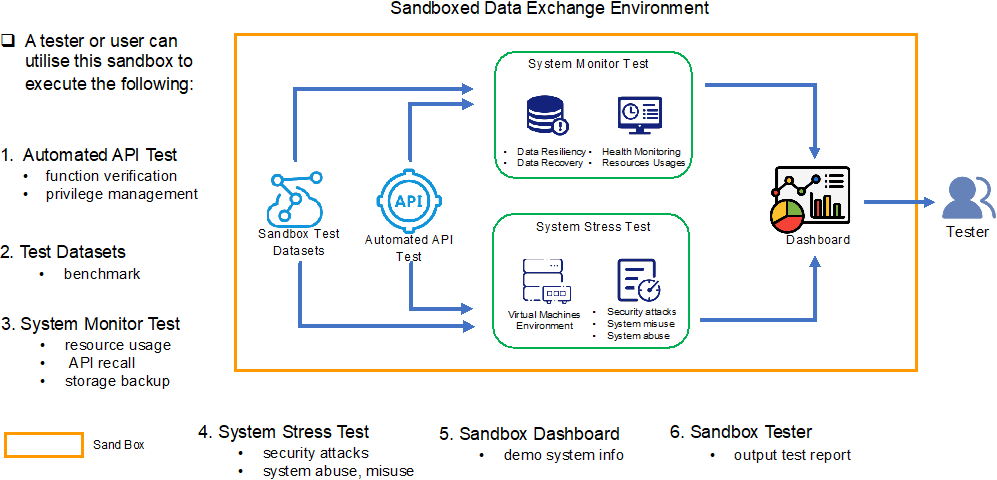
The modern economy is increasingly data-driven, and digital economy accounts for 40% or more of the GDP for some of the largest economies. Businesses rely on high-quality data to make better decisions, improve products and services, and create new business models. Data exchanges create a marketplace for data providers and data users, incentivize higher-value use of quality data, and can help promote better data quality, privacy, and provenance standards. Some global deployments of data exchanges can be found below in the following figure.

The Trusted Data Exchange Framework
The Data Exchange Platform contains the 3 purple components as described in Figure 1 below, namely, the Data Pricing Transformer for data product valuation and price recommendation via self-supervised machine learning, the Order Book Matching Module to match seller and buyer orders, and the Transaction Record Module to record the data product transactions.

This module creates a data exchange model that generates simulated data sellers and buyers, i.e., market participants. Such simulation capability can be useful for model validation before financial models are deployed for actual trading on the real market. A diagram depicting the interaction of the Simulation Module and the Exchange reinforcement learning can be found below in Figure 2.

The sandboxed data exchange platform provides an environment to stress test exchange components before their deployment to the production system, safeguarding the security and reliability of the production data exchanges.
A diagram depicting the main functionalities of the sandboxed data exchange platform can be found below in Figure 3.

